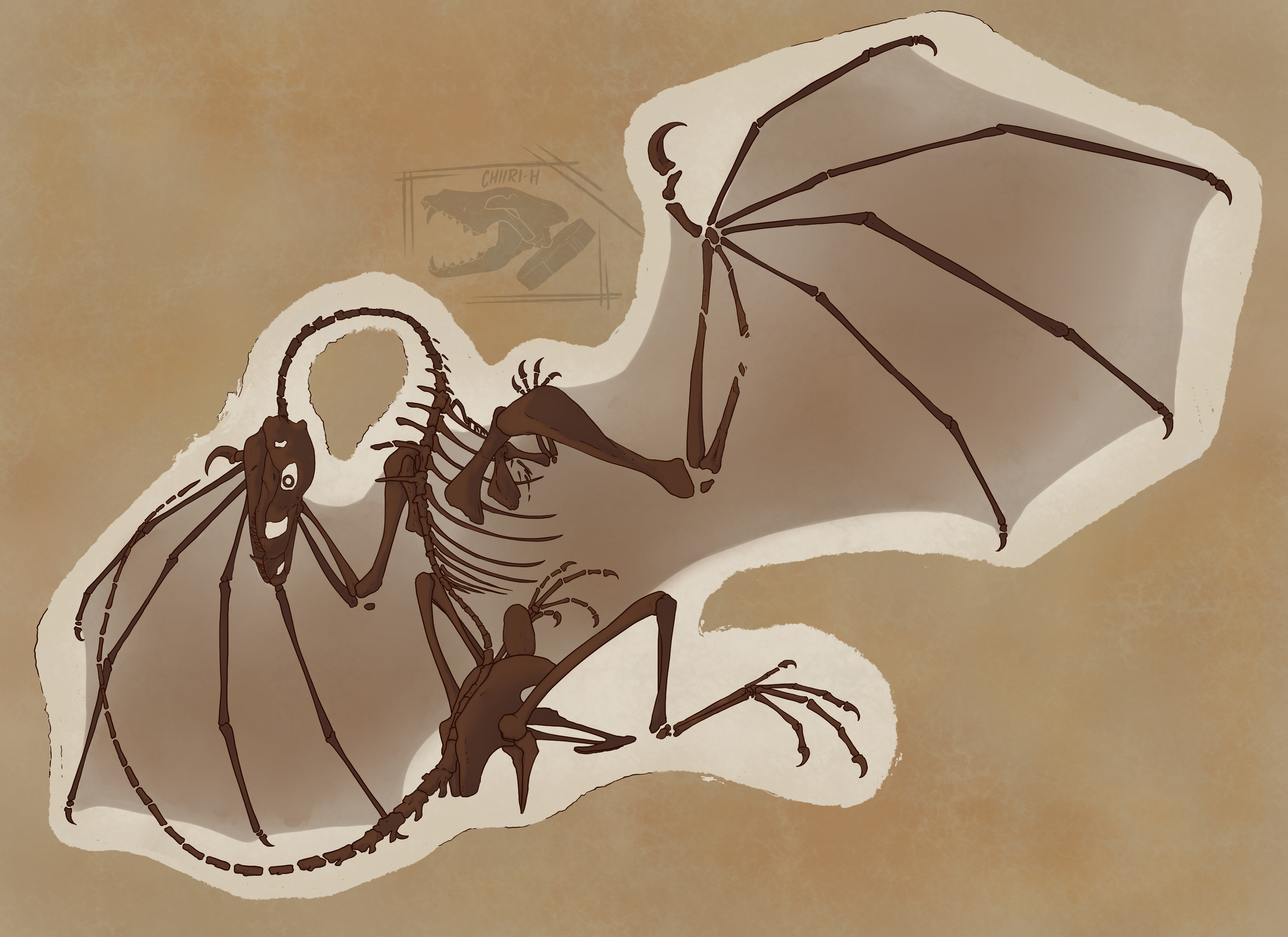Norland Dracii
The Norlands Drake
An extremely early species of dragon from late Jurassic Europe. The first specimen of a Norland Drake was discovered as far back as the human era in 2025, but due to its incredibly fragmentary nature, was thought to be an early pterosaur due to the specimen consisting only of partial wings and tail. Later specimens found in Germany, France, and Norway were much more complete, redefining the species as an early dragon.
Notable specimens
The holotype specimen, discovered in the human era, has since been lost. It was discovered in Germany, hence the species' naming after a translation of an Estonian fairy tale. While it was woefully incomplete and misclassified as a pterosaur, it was undergoing extensive study in Berlin. The holotype was believed to have been lost during the Lunar Dragonflight's conquest of Europe, and has never been recovered. A remarkable specimen found in 4,291 was nearly complete and excellently preserved in limestone layers, still showing many soft tissues such as the wing membranes and ornamentation the specimen had in life. This specimen was never given a nickname, and was unfortunately lost due to tsunamis caused by the Great Atlantic Earthquakes. Unlike previous specimens, casts and reproductions of the specimen still survive and are often on display. "Lucaris" is a Scottish specimen found in 19,843 known for incredible preservation. Impressions of internal organs, a likely egg, and soft tissues are well preserved on Lucaris. It is believed that further study of the specimen may reveal pigmentation preserved in cells left behind. The Lucaris specimen also preserves the individual's likely cause of death, a broken right wing, with no signs of healing. It's thought that Lucaris may have been attacked by either another basal dragon, or a pterosaur. Due to such theory, reconstructions of the specimen in life often depict it in conflict with pterosaurs, most depicting it as attempting to steal and consume their eggs.Basic Information
Anatomy
The species was incredibly small, with most specimens measuring under 1 foot in length from snout to tail. Curiously, analysis of the skull has revealed that dragons are actually more closely related to synapsids than they are diapsids, such as reptiles, and likely diverged from the groups quite early in their evolution. This has greatly changed understanding of dragon evolution, as it was previously thought that the group was descended from reptiles or possibly even dinosaurs themselves, however similar traits are likely a case of convergent evolution as they grew to larger and larger body sizes and adapted for higher bite forces to combat larger prey.
Although no earlier species have been found, it is believed that Norland dracii's ancestors may have been small lizard-like creatures primarily leading an arboreal lifestyle. All known specimens of the species preserve raised neural spines in the chest and lower neck of the animal, thought to be muscle attachment points for the wings and shoulders of the animal. Some have also interpreted the structure as a possible fin or sail, as is sometimes seen in dragons today.
A remarkable specimen uncovered in Scotland in 19,843, nicknamed 'Lucaris', has extensive soft tissue preservation and imprints in the stone, showing some of the specimen's internal organs and what is believed to be an egg in its pelvic cavity. It is unknown if the egg is that of the specimen's own prior to being laid, or if it was consumed by the the dragon prior to its death.
EXTINCT
Genetic Descendants
Origin/Ancestry
natural



Cool article love how that finding some old bones changed the whole idea of where Dragons and their genetic lines come from